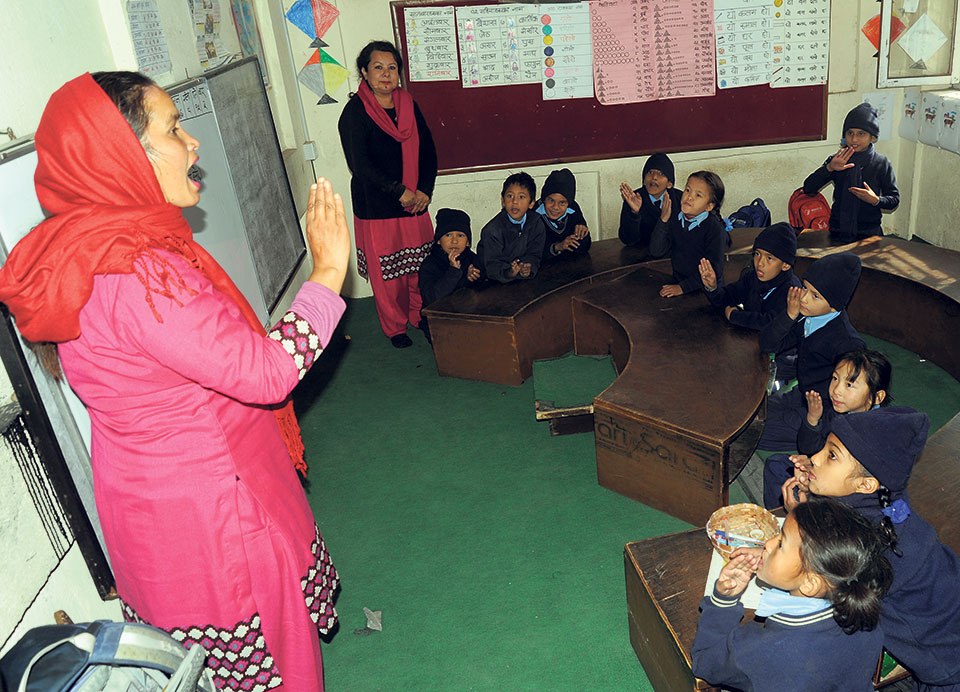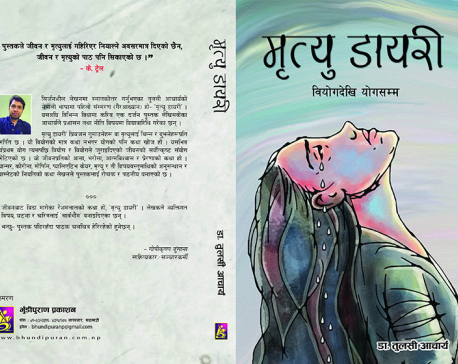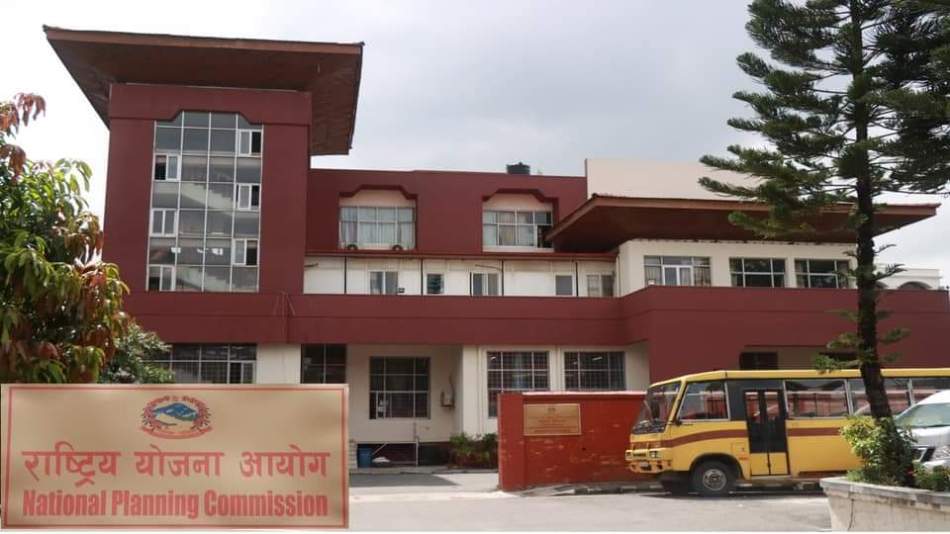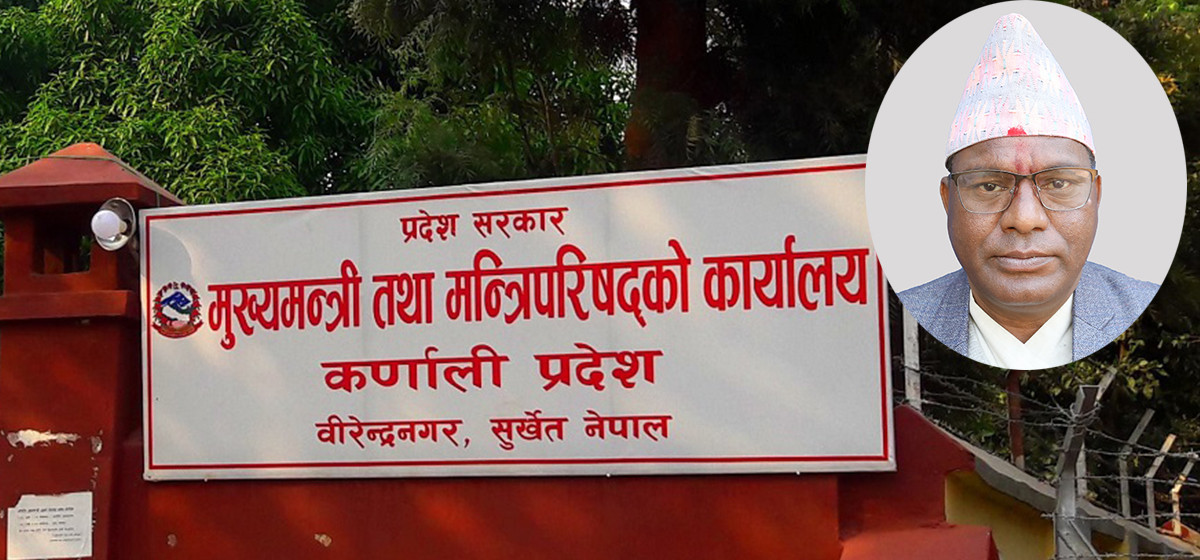
OR
cover story

From the outside, the Central Higher Secondary School for the Deaf looks just like any other government school. But in the dusty ground of Bal Mandir the yellow buildings house a school that has been the educational institution for the differently abled since 1977.
With 24 teachers—six of them hearing-impaired—the institution provides education from primary school to diploma levels. Over the years, there have been countless changes in the curriculum, teaching methods, and technical aspects of the system.
Oral education refers to the universal deaf educational system of only using voice training and lip reading during lessons. Manual method includes the use of just sign language. However, total communication method combines voice training, lip reading and using signs to impart optimum education to deaf children. Countries like the UK and United States practice it to complete their curriculum.
In 1996, when Rishi Devkota first started teaching Nepali deaf students, total communication was the teaching method at the school. Back then, Nepali Sign Language (NSL) was only in its nascent stage. Yet, the students found it to be a much simpler and convenient way of communication. Lip reading and voice training were more suitable for hard of hearing and late-deafened individuals. But sign language fit the requirement of each and every individual in the community.
As a result of this suitability, they promulgated an idea to only use sign language for communication. With rapid development and focus now shifted to the use of hand movements and gestures, the culture of voice training and lip reading started to fade away.
“We have no idea who exactly proposed this idea or who approved it,” says Devkota. But the domino effect of this movement has been very distressing.
Today, Central Higher Secondary School for the Deaf uses only sign language. And while it’s largely accepted in the deaf community, giving individuals a sense of belonging, it’s also separated them from the masses. Not everyone in the world knows sign language.
Voice training and lip reading are skills that help deaf people fit into the society. In their absence, hearing-impaired individuals are completely dependent on translators. They have to risk facing loneliness. From family functions to regular jobs, lack of communication makes them feel like an outsider.
There are already enough stigmas around disabilities. This has only allowed more reasons for those stigmas to go undefended.
Anti-socialness and lack of translators aren’t the only issues that these young students face.
Imitation is the main tool while learning a new language. When a medium of imitation, hearing, is taken away, hearing-impaired children find it extremely difficult to copy language. So much so that they can’t even form correct sentences. Conversing in sign language isn’t much of a problem; it’s the written language that they find the most challenging.
“Among all subjects, English is the toughest,” says Prerana Lama, a grade five student. “It’s very hard to understand words, what they mean and how to use them. I just don’t get them. Most of what I write is out of memory rather than understanding,” she adds. Lama’s mother only studied till third grade, her father is illiterate. Her parents know little to no sign language.
Sanyukta Shrestha, a grade nine student, is a child of two deaf parents. She says, “My parents cannot contribute much financially. Both of them married very young. My grandmother is the breadwinner of the house.”
In these states, all responsibilities of teaching the children fall upon teachers. But the job isn’t easy for them either.
“Deafness is a language disability,” confesses Devkota. “The curriculum is the same as that at a regular government school. The students don’t have special courses to help them out. Sometimes, teaching feels like we are shoving food down an unwilling child’s throat. It’s extremely difficult to make them understand.”
The nursery and kindergarten levels that have their very own, carefully crafted courses. Previously, the school refused to admit children under the age of six. It’s harder to calm down frightened deaf children when their parents leave. However, the age bar has been lowered to five at the moment.
What’s more is that there is no clear-cut method for deaf education. All the teachers have formed different syllabi according to their experiences on what works and what doesn’t. And thus things have been increasingly difficult in the past few years.
Sobita Poudel, one of the youngest teachers in the faculty, says, “We don’t separate students into sections. There is one grade and one class assigned for each of them. A decade ago we wouldn’t have more than five to 10 students in one room. It was easy to hold their attention.” But right now, the school is so full that it isn’t even taking new admissions.
“With able students, calling out their name is enough to get them to pay attention. Here, we have to go to the student and tap them on their shoulders. With more than 25 students to teach in a period, we haven’t been able to distribute our time among all of them equally. Each student needs his own method to process new things. The system is too old and quite flawed. And it has taken a toll on both the teachers and students,” says Poudel.
The curriculums from grade one to SEE are completely government-provided. There are regular terminal examinations, results, class tests and leveling up to next grade according to scores.
However, the +2 system only offers streams of accounting and education. The science stream has never existed for higher education.
“Our students have never really been interested in science. And even if they were, we cannot support the stream with the resources we have. We know what the students are capable of. They barely pass SEE. They barely complete their +2 education,” says Devkota.
However, the staff’s biggest complain is reglarding the curriculum itself. It’s one thing to give abled and differently-abled student the same syllabus. But the deaf are also expected to meet the standards of a regular child: They are assessed the same way, by the same teacher, for the same course.
“One has to take into account their understanding level and their differently-abled ways,” says Devkota, “They are even expected to compete at the same level during job opportunities. With the education that they get, which is always centered on theoretical writings, skill-based trainings are never given much priority.”
“Our graduates can only find teaching or substitute teaching, volunteering jobs at best. Most of them are employed in labor works of one form or another. Their education has rarely helped them in career building,” he adds.
Only a handful of people in the community have a Master’s degree.
Another rarely addressed issue is there tends to be large age gaps between children in the same class. Yasoda Gautam, a late-deafened teacher, says that this is because parents tend to send their hearing-impaired children to study in a regular school. As they grow older, and the courses become tougher, only then are the children brought there. Those children have to learn basic sign language from the beginning and start all over again. This greatly delays their education.
The school is free of cost for all students. Aside from that, +2 graduates from the college individually receive Rs 40,000 as of last year. However, Rishi Devkota isn’t satisfied with that.
“If the money was put into the school instead, we could actually build something new, bring in facilities for the children. When graduates receive money, they tend to spend it on unfruitful things. And it often feels like a waste,” he says.
When asked about the changes he’d like to see, the first thing he commented on was the curriculum. According to Devkota, it needs to be transformed into something hearing-impaired friendly and representative in nature. He feels, rather than theory, the courses must prioritize skill development and vocational trainings. “If the government is having a hard time creating a proper syllabus, we’d be more than happy to be a part of it,” he says.
“The students have been facing all these issues for years—but who can we complain to? Who is there to hear us?”
kumudinipant@gmail.com
You May Like This

Life is never too pointless to be ended
"Priye Sufi," a book by Nepali author Subin Bhattarai, is a moving and consoling book. The story's primary lesson is... Read More...

'ULFA: The Mirage of Dawn’ offers a remarkably balanced narration on history of ULFA
Rajeev Bhattacharyya’s book offers a remarkable history of ULFA, its formation and rise to prominence, the interplay of its principal... Read More...

Mrityu Diary: A must read book about life and death
"Mrityu Diary" or the “Death Diary” is a book written by the author Tulasi Acharya, which is currently available in... Read More...






Just In
- National Development Council meeting on Thursday to finalize 16th Plan
- Qatar Emir meets PM Dahal, bilateral agreement and MoUs signed between Nepal and Qatar
- Employee involved in distribution of fake license transferred to CIAA!
- Youth found dead in a hotel in Janakpur
- CM Kandel to expand cabinet in Karnali province, Pariyar from Maoist Center to become minister without portfolio
- Storm likely to occur in Terai, weather to remain clear in remaining regions
- Prez Paudel solicits Qatar’s investment in Nepal’s water resources, agriculture and tourism sectors
- Fire destroys 700 hectares forest area in Myagdi



_20240423174443.jpg)









Leave A Comment